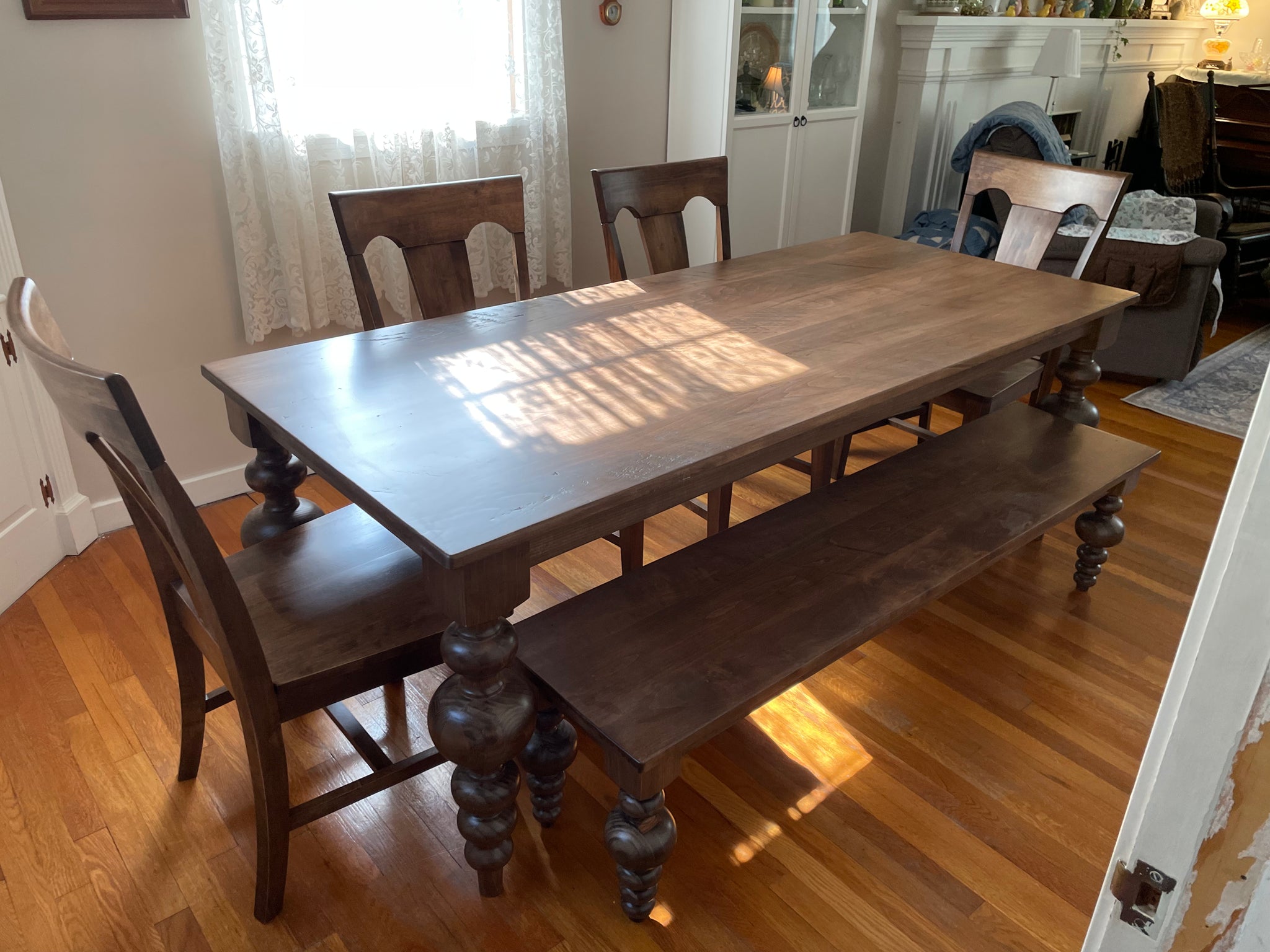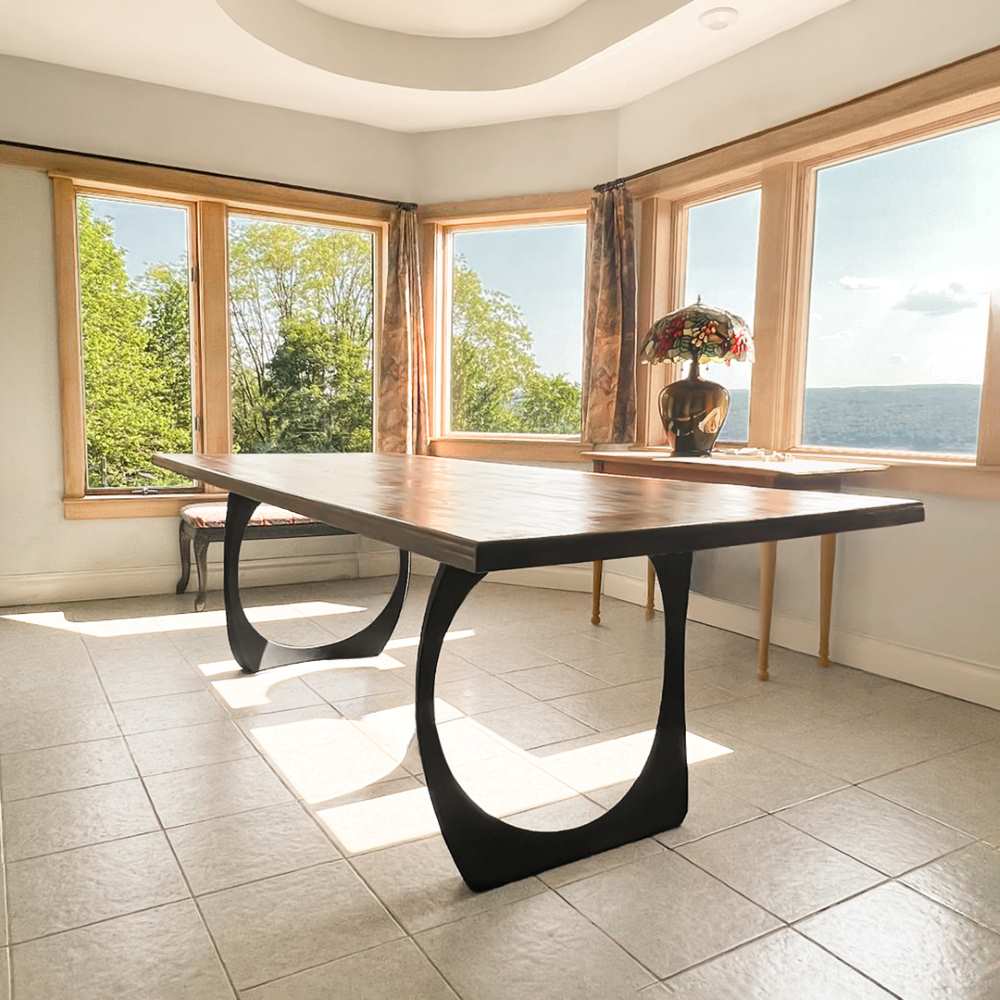Find the Ideal Dining Room Table Legs for Any Interior Design Style
Find the Ideal Dining Room Table Legs for Any Interior Design Style
Blog Article
From Standard to Modern: Find the Perfect Dining-room Table Legs for Your Design
The choice of eating room table legs plays a critical duty in specifying the overall personality of your area, bridging the void between traditional workmanship and modern aesthetics. While traditional designs such as cabriole and transformed legs stimulate a sense of classic elegance, modern styles like barrette and geometric options provide an opportunity for striking visual passion. Examining the right balance in between these styles needs a nuanced understanding of your existing decor and personal preference. As you take into consideration these aspects, the inquiry stays: exactly how can you seamlessly integrate these varied leg designs to create a harmonious dining experience?
Understanding Table Leg Styles
The variety of dining room table leg styles can significantly influence both the visual appeals and functionality of the space. Each leg style adds distinct visual aspects and functional functions, satisfying varied style preferences and usage needs. Recognizing these designs is vital for choosing the best dining table that straightens with your general interior design vision.
For circumstances, conical legs provide a clean, classic appearance that can improve a room's elegance, while stand bases offer stability and take full advantage of legroom, making them optimal for smaller spaces. Barrette legs, a trademark of mid-century modern layout, present an industrial panache, permitting a ventilated, open feeling. Trestle legs stimulate rustic charm, supplying robust assistance and a sense of eternity.
Furthermore, the selection of materials plays a substantial function. Wood legs can bring warmth and appearance, whereas metal choices frequently share a sleek, modern vibe. Eventually, recognizing table leg styles is crucial for producing a natural dining area that mirrors personal design while ensuring practicality and convenience. By thoughtfully thinking about these aspects, you can enhance both the aesthetic and practical allure of your dining space.
Traditional Table Leg Options
When selecting dining space table legs, typical options frequently symbolize classic style and craftsmanship. These designs reflect a rich heritage and a commitment to quality, making them optimal for those that value classic aesthetics.
Among the most famous standard leg designs is the cabriole leg, identified by its elegant bent form. This layout often features attractive carvings and is most frequently discovered in Queen Anne and Chippendale furniture. One more popular option is the turned leg, which flaunts a collection of smooth, rounded forms that supply a traditional look while maintaining stability.
In addition, the straight leg, while straightforward, supplies a tough and unadorned structure that can blend flawlessly with a selection of tabletop styles. For those drawn to ornate outlining, claw-and-ball feet legs stimulate a sense of grandeur and can work as a stunning focal factor in any type of eating Full Article room.
Finally, pedestal bases, although not purely legs, give a different standard choice that enables adequate legroom and can be wonderfully carved. Each of these typical leg styles contributes to the total atmosphere of a dining area, marrying feature with aesthetic allure.

Modern Table Leg Layouts
Modern table leg designs supply a diverse array of styles that stress cutting-edge materials and tidy lines. These designs commonly prioritize performance while working as striking prime focus within an eating space. Minimal aesthetic appeals prevail, with legs crafted from materials such as metal, glass, and crafted wood, which add to a contemporary and airy feel.
One popular style is the barrette leg, characterized by its slim, tapered framework that supplies security without frustrating the table top (dining room table legs). This navigate to this site style is commonly found in mid-century contemporary furnishings and can effortlessly complement various eating table shapes. An additional pattern is using geometric shapes, where legs may tackle asymmetrical or angular types, including aesthetic rate of interest and a touch of virtuosity

Mixing Designs for Unique Spaces
Often, house owners seek to produce special dining rooms that mirror their personal design by mixing numerous layout elements. This approach allows for the incorporation of diverse visual appeals, resulting in a harmonious yet unique environment. Pairing a rustic wooden table with sleek, modern metal legs can produce an appealing comparison that elevates the room's overall allure.
Additionally, incorporating vintage table legs with contemporary table tops can evoke a feeling of history while maintaining a contemporary sensibility. Such combinations not only display specific preference but additionally motivate creative thinking, permitting property owners to curate an area that really feels both individual and welcoming.
Color plays a vital duty in this blending process; selecting table legs that enhance or comparison with the existing shade scheme can boost aesthetic rate of interest. Whitewashed legs can soften the boldness of a dark table surface, producing a balanced visual.
Tips for Selecting the Right Legs
Choosing the right table legs is vital for attaining both performance and aesthetic allure in your eating space. Begin by thinking about the overall design of your room. Conventional settings take advantage of legs that include complex makings or transformed designs, while contemporary rooms might require smooth, minimal styles.
Next, evaluate the elevation and security of the legs. dining room table legs. Standard dining tables vary between 28 to 30 inches in height, so guarantee the legs match this measurement for convenience. Furthermore, durable materials, such as wood or steel, can enhance security and longevity
Review the leg form also-- alternatives include directly, tapered, or pedestal designs. Straight legs provide a traditional look, while tapered legs can add a touch of elegance. Pedestal bases provide ample legroom and are ideal for smaller rooms.
Verdict
In recap, selecting the perfect eating room table legs calls for mindful factor to consider of both traditional and modern-day styles. By balancing leg design, elevation, and product with the general decor, a natural and welcoming ambience can be accomplished.
The variety of eating space table leg designs can substantially influence both the looks and functionality of the space. Eventually, recognizing table leg styles is vital for creating a natural eating area that reflects personal style while guaranteeing usefulness get redirected here and comfort.One of the most iconic conventional leg styles is the cabriole leg, defined by its stylish bent shape. Straight legs provide a traditional appearance, while conical legs can add a touch of sophistication.In recap, choosing the suitable dining area table legs calls for careful factor to consider of both contemporary and standard styles.
Report this page